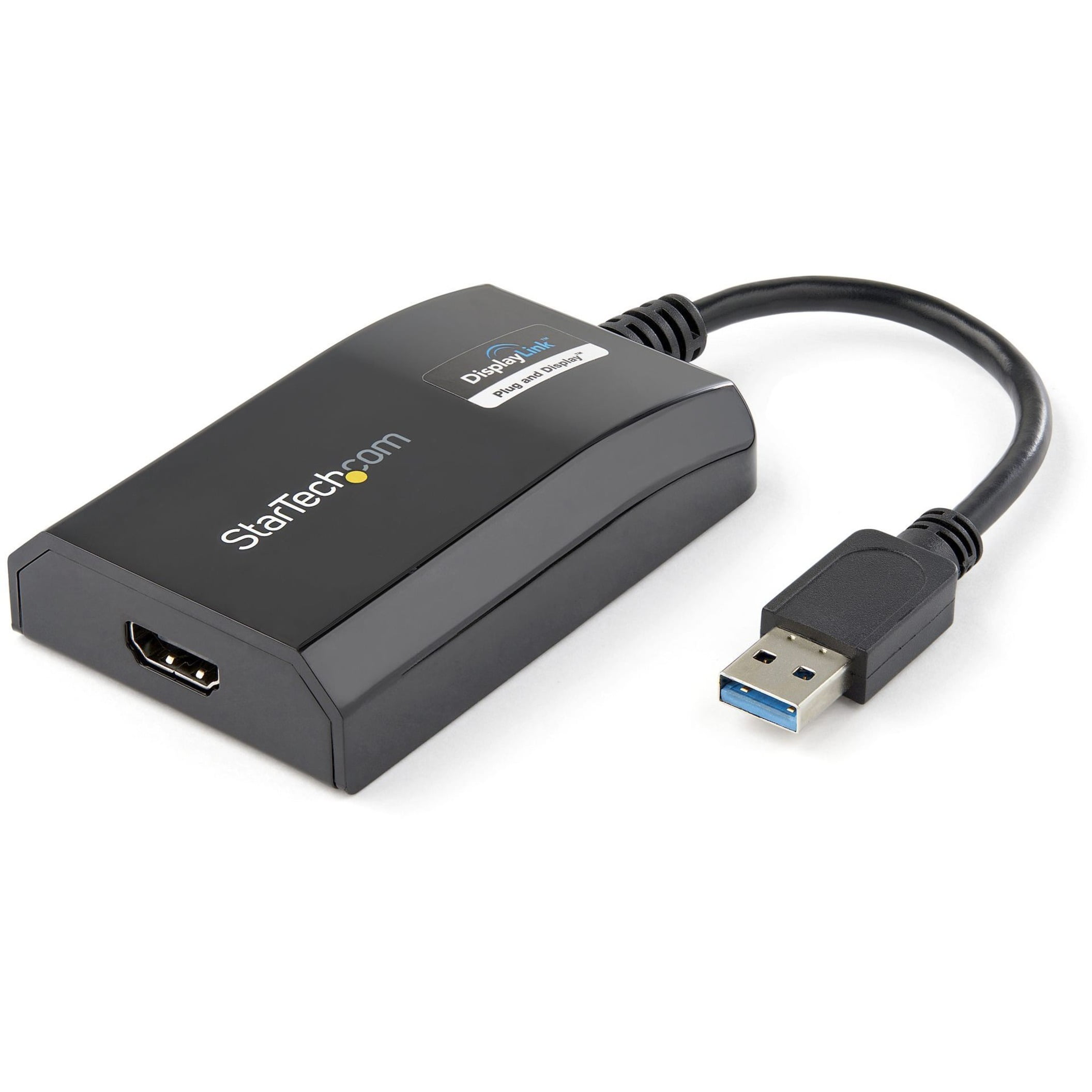

- Displaylink usb graphics adapter not how to#
- Displaylink usb graphics adapter not install#
- Displaylink usb graphics adapter not driver#
Displaylink usb graphics adapter not install#
Installing DisplayLink drivers manually may conflict with a Windows Update install already happening in the background, and result in mis-installed drivers. We recommend getting your Windows 8 machine to be Internet connected, and then allow Windows Update to automatically download and install the latest drivers.
Displaylink usb graphics adapter not driver#
DisplayLink driver installs may only partially complete or may not fully uninstall, leaving the driver in a non-working state (USB monitors don’t work), even though no errors are reported. To do that, hit the Windows key (to bring up search), type “Windows Update”, expand the important updates, and right click on the one from nVidia and select “hide update”. And then you have to stop Windows Update from offering the same update again. Displaylink usb graphics adapter not how to#
If you get in this situation, here’s how to do a rollback. Rollback to nVidia driver version 9.18.13.286 () solves the issue. DisplayLink released a new update (7.0M3) in November that resolved most problems, but some smaller ones remain.
nVidia’s new Win8 graphics drivers may cause DisplayLink’s USB graphics driver to stop functioning or other problems. Other workarounds including connecting via USB 2.0 only, or replace Microsoft’s Windows 8 stack with Intel’s Windows 7 stack Plugable has now updated all units in stock at as of ). The problem is solved with a dock firmware update (this one is only for the Plugable UD-3000. In particular the Win 8 stack flags an error in the hub descriptor of some USB 3.0 Universal Laptop Docking stations, which then causes a cascade of errors that (on Intel USB 3.0 host controllers) can leave the xhci root port with a code 43 error, disabling all USB 3.0 ports. This is great in the long term, but the Microsoft stack may have different behavior or be stricter than USB 3.0 stacks on Windows 7. Windows 8 replaces all 3rd party USB 3.0 host stacks with a Microsoft-provided USB stack. But we also have reports of problems that have just cropped up with the final Windows 8 release and updates this week: We have reports of many systems working well. And once you do make the leap, always aim to run the latest DisplayLink drivers. Users with USB multiple monitor setups should be cautious about upgrading to Windows 8 until things settle down. a new Windows DirectX, Mac Quartz Extreme, or Linux kernel/Xorg version) or updates to the Intel, nVidia, AMD, or other graphics driver - can all potentially cause problems.Īs Windows 8 is just releasing and component makers are releasing driver updates, there will be a lot of churn for a few weeks, at least. So updates to either the operating system’s graphics subsystem (e.g. To add graphics outputs in a fully plug and play fashion, the drivers have complex dependencies on the operating system and the primary GPU drivers on the system. Here’s the background:īecause Windows (and Mac and Linux) don’t have built-in support for USB graphics, the drivers have to do a lot of work. 
We’re recommending that users with DisplayLink-based USB graphics devices hold off on upgrading to Windows 8 until DisplayLink, Microsoft, and Intel have a chance to do further driver updates. If you still are having problems, please contact us at. If you are having difficulties with DisplayLink in Windows 8 or 8.1, please install the latest DisplayLink drivers from here. The content of this post has been superseded.






 0 kommentar(er)
0 kommentar(er)
